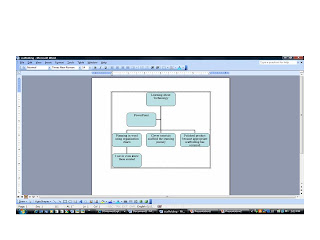
During week three, I registered to make my own Learning Management System. Unfortunately, due to an excessive backlog I was unable to create my own system. Although, we are all frequent users of LMS systems like Moodle and Blackboard. I will in turn reflect on this tool from my own experience. As a learner using LMS I have mixed feelings about the tool.
I like being able to access information, resources, course guidelines at any time of the night and day. The organization of Moodle is easy to navigate and locating resources is quite easy. It is also great to be able to contribute and discuss concerns with my peers and lecturers in forums. However, I really do think the on-campus lectures compliment this Learning Management System and I would feel totally overwhelmed if I was a FLEX student and only had Moodle as my learning tool. This could come down to my auditory and social learning preferences. I would be interested to know if anyone would prefer to just use the Moodle system.
When I consider my own feelings about the LMS, I’m not sure if I would use it as a major teaching tool in my classroom. This system can be quite daunting for the students and therefore I believe focused scaffolding would be essential when implementing this tool in the primary classroom context. Learning Managements Systems can be incorporated in the classroom context through virtual classrooms or Blackboard systems developed by Queensland Education’s Learning Place. I have conducted a brief SWOT analysis to evaluate the effectiveness of LMS in the classroom.
Strengths
- Organised structure within the system
- Access available 24/7 for teachers, students and parents
- Time efficiency as tasks can be accessed at home
- Online quizzes can be incorporated in system to monitor learning process
- Communication and reminders through announcements
- Collaborative learning through discussion forums
- Encourages independent learning
- Provide students with a range of resources they wouldn’t normally access
- Password protected system
Weaknesses
-Pressure on students to monitor learning and pace themselves
-Minimal personal contact and thus students cannot instantly ask for help and get an answer
-Does not cater for the auditory or social learners
-Overwhelming and could deter some students engagement with topic
Opportunities
-Parent involvement increased and thus multiple perspectives included in classroom
-Extension resources can be included for advanced students to access
-Monitor students’ engagement with task materials and conduct formative quizzes
-Safety of computer screen allows shy, quiet students to voice their opinions
-Exposure to new technologies
Threats
-Computer access at home might pose problems
-Discussion boards could open opportunities for online bullying and thus expectations must be clearly outlined prior to implementation of system
-Independent learning could cause a large gap between members of the class with students being at different task completion levels.
Let me know how you feel about this system and if you think it is restricted to a certain age group.
Cheers Pauline



